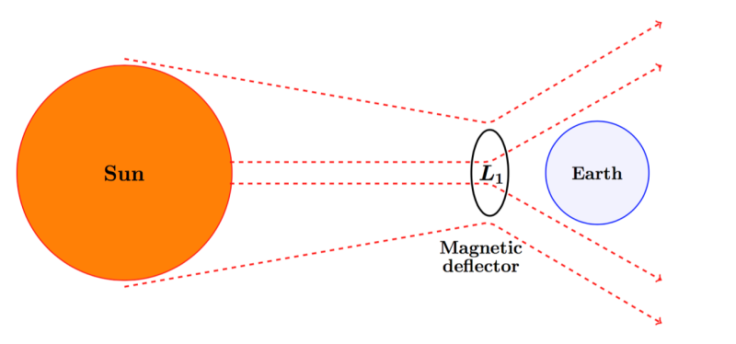Solar storm could plunge Earth into technological apocalypse, but giant shield might save us all
Scientists have proposed giant magnetic shield to protect from devastating solar flare.

Scientists have warned the Earth could be spun into a technological apocalypse as a result of a devastating solar burst that would knock out all communications systems and electrical grids, causing mass carnage and up to $20 trillion in damage.
However, fears of a world temporarily without Facebook could be prevented with the help of a giant magnetic shield that would sit in orbit and deflect harmful radiation from the Sun away from our tech dependent planet.
In a paper from Harvard-Smithsonian Centre for Astrophysics it describes the catastrophic fallout should the Earth be hit by a coronal mass ejection (CME), which is essentially a giant and powerful plume of charged particles that can disrupt satellites, internet and electronics.
Two scientists, Manasvi Lingam and Avi Loeb, considered that the Sun erupts a significant CME every 100 years or so, with the last recorded hitting Earth in 1859 called the Carrington Event, which frazzled telegraph stations across Europe and North America.
Now, with the planet so reliant on technology for communication and to keep everything running from financial markets, transportation and our everyday lives, should such an event happen again it would have a far greater impact on society, not to mention the cost should everything go offline.
"We predict that within about 150 years, there will be an event that causes damage comparable to the current United States' GDP of approximately $20 trillion, and the damage will increase exponentially at later times," Loeb told Gizmodo.

When will the next big solar flare hit Earth?
With the researchers claiming there's a 10 percent chance the next disruptive solar burst could be coming our way within a decade they have proposed a plan to defend the Earth with a shield that could sit between the Sun and Earth.
The scientists theorised the Earth-sized protector would be made from a 100,000 ton copper loop, and placed at 205,000 miles from the planet which would deflect the sun's harmful particles away using magnetic fields using a process known as the Lorentz force.
Using a magnetic loop would also not block out sunlight or be built from a huge amount of mass that not only would take lots of work to build but also be a logistical headache to launch into space. Other benefits of this system is that we already have the technology available to build it.
The researchers admit it won't be cheap but the relative cost saved compared to the damage of a mass solar eruption hitting the planet would be worthwhile, although whether it could actually be made in time is a concern.
"The related engineering project could take a few decades to construct in space," said Loeb. "The cost for lifting the needed infrastructure to space (weighing 100,000 tons) will likely cost hundreds of billions of dollars, much less than the expected [solar storm] damage over a century."
The authors of the paper, which is being considered for publication in The Astrophysical Journal Letters, suggest the superstructure could be made in space itself at a cost comparable to the International Space Station. It's a solution more likely seen in a sci-fi movie but should another Carrington event strike it would be a lot cheaper than the trillions of dollars of damage predicted.
© Copyright IBTimes 2025. All rights reserved.






















